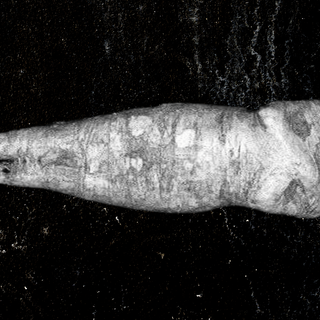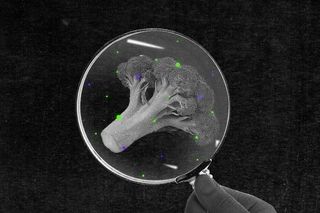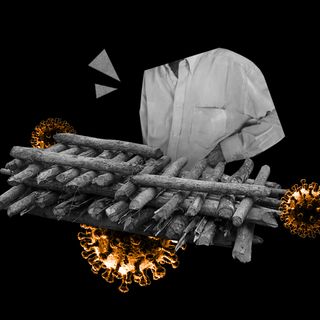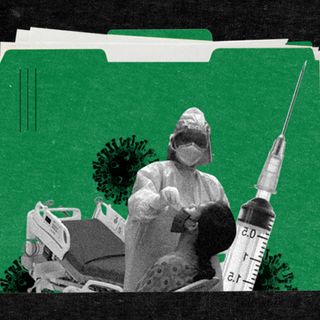
How Toxins, Pesticides Travel Through the Food Chain to Our Plates
Toxins accumulate in the body the farther up the food chain you go, as animals eat more plants and prey with traces of chemicals.

In 1948, a newly independent India introduced an insecticide by the name of Dichloro Diphenyl Trichloroethane (DDT) as a means to curb pests that ate crops and spread diseases. Four decades later, India banned DDTs use in agriculture in 1989. The abrupt halt to DDTs popularity was in light of piles of scientific evidence about the harm it causes the environment.
A part of DDT’s long-term dangerous implications is its indestructible longevity — it is non-biodegradable and can remain in soil or water for years. When animals eat or swallow the polluted soil or water, the toxins they ingest travel through the food chain, growing in concentration until the predators at the top of the food chain end up ingesting toxic prey. This process is known as biomagnification. Though biomagnification is a natural phenomenonit is magnified due to human activities like agriculture, mining, and industrial operations — all of which have increased in intensity and frequency. The ecological and health implications of increased biomagnification include dangers of several deaths, severe drop in species numbers and even extinction for animals at the tertiary level of the food chain.
Biomagnification isn’t merely restricted to insecticides — the process happens in all ecosystems and food chains. Food chains start from producers like plants, and predator species like human beings and animals, who are at the bottom of the food chain, can ingest heavy metals, pesticides, effluent chemicals, waste, and more toxins? floating in oceans and deposited in soil or plantsdue to increased human intervention.
These toxic materials are broadly divided into inorganic and organic materials. The organic materials are insoluble in water, soluble in plant and animal fats but not easily broken down by animal metabolism. This means that organisms are absorbing and accumulating toxic substances at a rate faster than they excrete these substances — leaving unprocessed toxins in the body of organisms. When a link in the food chain is consumed by those figuring higher in the hierarchy, the toxins travel up the food chain — and end up accumulating in greater amounts till the predator at the end eats the most toxic version. For example, mercury compouds ingested by small fish show up in larger amounds within the fish who eat these small fish, as big fish eat several small fish. This amount significantly increases in the predator at the end of the food chain — herons and seagulls — because they eat several mercury poisoned fish.
Related on The Swaddle:
India’s Cheetah Reintroduction Plan Is Fraught With Political Symbolism, Short on Scientific Rigor
Biomagnification sped up by human intervention is clearly dangerous for predators. Birds of prey like hawks and eagles dealt with reproductive failure in the 1970s in the U.S. due to pesticide poisoning, as it was hard for them to produce eggs with strong, protective calcium coverings. This failure led to steep declines in their population around the world. Thousands of killer whales were stranded off the Pacific coast of Japan, and scientists found that young killer whales stranded on land had higher levels of organohalogen pesticides (like DDT) than their mothers because the pesticides traveled via lactation from mother to child.
Human beings also hover close to the top of the food chain. If a human ingests a Class II insecticide (moderately toxic, such as DDT), low or moderate exposure can result in nausea, diarrhea, and irritation; while high exposure can cause tremors, convulsions, and in extreme cases — chromosomal damage linked to diseases or problems in development. Ingesting some toxins in large amounts can also cause death.
There have been several attempts to downgrade the harmful effects of biomagnification like eliminating the use of heavy metals from industries and daily use, regularly cleaning contaminated areas that fester toxins, and proper disposal of toxic substances. Eating fish and other marine animals is also a common reason why humans ingest toxins — several initiatives have raised awareness around eating marine animals that are in-season to avoid toxic effects of biomagnification that occurs seasonally due to natural processes.
However, the greatest likelihood of change will come at a legislative level, which seems unlikely. India still remains the largest producer of DDT in the world due to its use in fumigation and control of vector-borne diseases such as malaria and dengue. India voted to oppose the 2020 deadline to ban DDT around the world at the Conference of the Parties (CoP) to the Stockholm Convention on Persistent Organic Pollutants (POPs) in Geneva. To date, several poor households continue to use DDT as an insecticide — which comes at the detriment of the many components making up the food chain.
Apart from humans, who are omnivores, predators must consume highly toxic prey below them in the food chain. In a situation where apex predators are already facing a severe decline in population due to forest fires, loss of habitat, and overexploitation, biomagnification is another silent killer that can deter environmental conservation efforts. Apex predators are known to play an important role in “ecosystem functioning, disease regulation, and biodiversity maintenance” — biomagnification would mean they end up consuming noxious waste leading to fatal consequences. As researchers say, “The full recovery of viable apex predator populations is currently the exception rather than the rule.”
Aditi Murti is a culture writer at The Swaddle. Previously, she worked as a freelance journalist focused on gender and cities. Find her on social media @aditimurti.
Related


The Second Wave: A Crematorium Worker Who Sees 25 Bodies in a Day Laments “We Are Very Tired Now”
